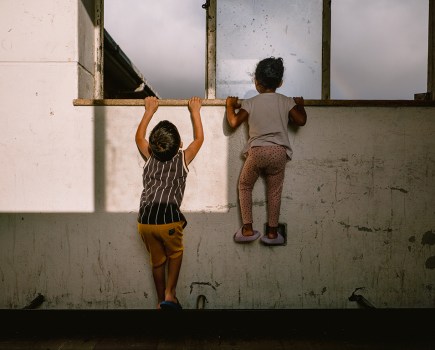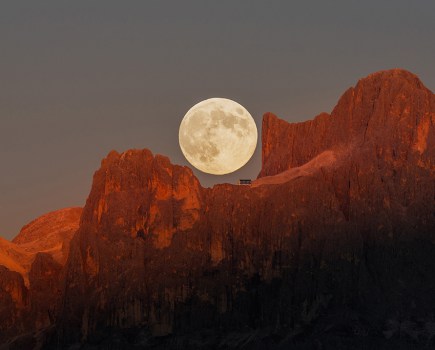SPECIAL REPORT
Johnston Press – which publishes more than 200 newspapers and magazines – has embarked on a redundancy programme branded ‘dangerous’ by the National Union of Journalists (NUJ).
The NUJ warns that the publisher plans to replace photographers’ images with pictures garnered from social media and those sent in by readers.
Last year it was reported that 24 staff photographers faced the chop.
An article by journalism website Hold the Front Page this week suggests there will be ten compulsory redundancies.
Photographers are set to be axed at titles across Lincolnshire, Warwickshire, Northamptonshire and Buckinghamshire – mostly via a voluntary redundancy programme.
The exact numbers are unclear, however.
Amateur Photographer (AP) understands that photographers may be among other newspaper staff to have already chosen to take voluntary redundancy elsewhere in the company – on top of those reported this week. ‘I cannot rule it out,’ a well-placed source told AP today.
Johnston Press runs 154 paid-for weekly papers and 37 free weeklies in the UK, Isle of Man and Republic of Ireland.
Photographers are ‘redundant’
Meanwhile, The Guardian‘s head of photography today hit back at views expressed on the matter by one of the newspaper’s own columnists.
On Monday, media commentator Roy Greenslade sparked industry fury after pointing out that ‘relying on freelancers and, of course citizens with smartphones – to provide pictures is far cheaper than having photographers on staff’.
Greenslade said he was surprised that the Johnston Press decision hadn’t happened sooner, given that everyone takes photos these days as a matter of routine.
‘In the real sense of the word, newspaper photographers are therefore redundant,’ he asserted.
Greenslade, who is a professor of journalism at City University in London, added: ‘Yes, there will be those who argue that the result, in terms of quality, will be cheap too. But I doubt that will be the case at local weekly newspaper level.’
In his article, Greenslade had conceded that standing outside court for an image of a defendant or witness may still require a professional or ‘experienced freelance’, but he added, controversially: ‘Otherwise, for the general run of the news diary, anyone can do it.’
In response, The Guardian‘s head of photography Roger Tooth told AP today: ‘Roy is entitled to his opinions, of course, and I think he has made it perfectly clear he was talking about the local press.
‘However, I do strongly disagree with his statement: “Otherwise, for the general run of the news diary anyone can do it”.’
‘Throwing the towel in’
The British Press Photographers’ Association (BPPA), which led condemnation of Greenslade’s comments, accused the columnist of having ‘thrown the towel in on quality’.
Venting its disapproval, the BPPA says on its website: ‘To assert that anyone with a camera can take a picture isn’t only an insult to the skilled photographers who make silk purses out of sows’ ears on a daily basis, it also invites the bean-counters – who are behind the decisions to axe photographers’ jobs – to question the need for written journalists too.’
Earlier this week, NUJ general secretary Michelle Stanistreet also blasted the job cuts: ‘This is a disastrous decision, not just for photographers but for readers and advertisers of newspapers, who will notice a huge difference in the quality of pictures,’ she said.
Stanistreet warned of ‘dangerous mistakes… if a paper’s picture quality is left to the general public’, stressing that photographers and picture editors are responsible for ensuring captions are correct and pictures verified…
‘It is not just a matter of pressing a button on a mobile phone.’
Andrew Wiard, chair of the NUJ’s Photographers’ Council, added: The fact that many bystanders now have cameras is no guarantee that newsworthy, well-shot, usable images will result, that caption information will be accurate and appropriate, or that the rights of creators of that content and those shown are respected.’
‘You need a DSLR’
Bedfordshire-based freelance photographer Jonathan Mitchell went from a full-time to part-time photojournalist after he found it financially difficult to maintain as a full-time career.
Mitchell told AP there is room for smartphone photos by ‘citizen journalists’, but argues that such pictures should be limited to ‘spot news’, celebrity photos and situations where only a wideangle shot is required – such as a landscape image for the front page of The Times.
‘It [smartphone photography] livens up the feed of images we see in the papers every day,’ said Mitchell who has worked for Johnston Press in the past.
However, if all the photos in The Guardian were all shot on smartphones ‘it would be a rubbish paper’, he claims.
While he concedes that sending an image via a smartphone can be quicker than transferring it from a digital SLR, Mitchell adds: ‘It’s a pretty unreliable feed of images.’
He cites a telephoto shot, or a close-up of a politician’s facial expression ‘to tell a story’ as examples of where only a professional photographer can do a proper job.
‘I don’t think that smartphones in their current guise will ever replace news photography… you can’t get away without [using] a DSLR.’
And lot of smartphone photographers also lack the ‘nouse, news judgment and creative ideas’, asserts Mitchell.
‘You have to think on your feet a lot.’
That said, Mitchell points out that smartphones and tablets come into their own when a photo needs to be taken candidly – especially when the shutter sound is set to “silent” – but he doesn’t see the devices as a threat.

The rise of the smartphone comes as falling fees already take their toll on professional photographers, including Mitchell.
‘The problem I see more is a lack of money in the industry to keep photojournalists on the road,’ said Mitchell who fears the end of the photo-essay type assignment when photographers have to pay all their expenses – such as hotel bills – up front.
‘You end up with a lot of people drifting off into food photography and not a lot of photojournalism.
‘I feel a lot for the young photojournalists coming into the business – where is the next generation coming from?’
Mitchell said he knows of an Italian photojournalist who received a 50% fee from photos he sent to an agency but believes the split was unfair, given his outgoings. ‘You don’t pay 50% of my travel costs,’ he told the photo library.
Photo rights warning
There is another danger too: potential infringement of photographers’ rights, according to the NUJ’s Andrew Wiard who said: ‘Sacking photographers only makes sense in a world where quality and accuracy count for nothing, where readers are treated with contempt and where the organised theft of other people’s images is going to be carried out on an industrial scale.’
Commenting on the current job loss programme, a Johnston Press spokeswoman confirmed to AP that all photographers at its Midlands titles ‘will soon be leaving… following a review – at local level – of the way photographic content is generated’.
‘Most photographers have taken an advanced voluntary redundancy package.
‘A small number of photographic positions were placed at risk and final consultation is underway with those likely to be affected.’
The publisher refused to confirm the number of photographers involved.
It is not yet clear if, or how many, photographers are among those to have opted for voluntary redundancy elsewhere in the company.
Johnston Press titles include The Yorkshire Post and The Scotsman.







